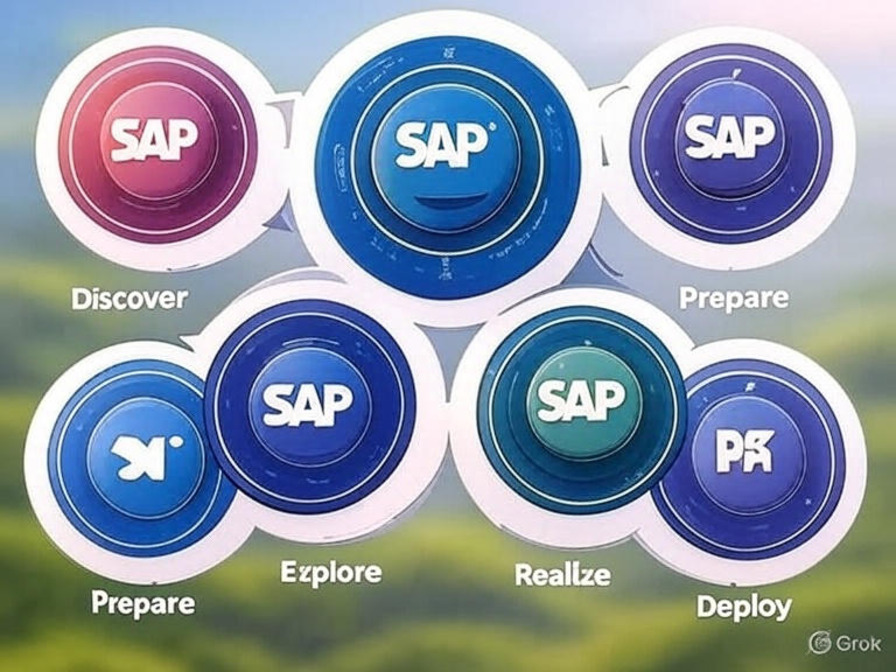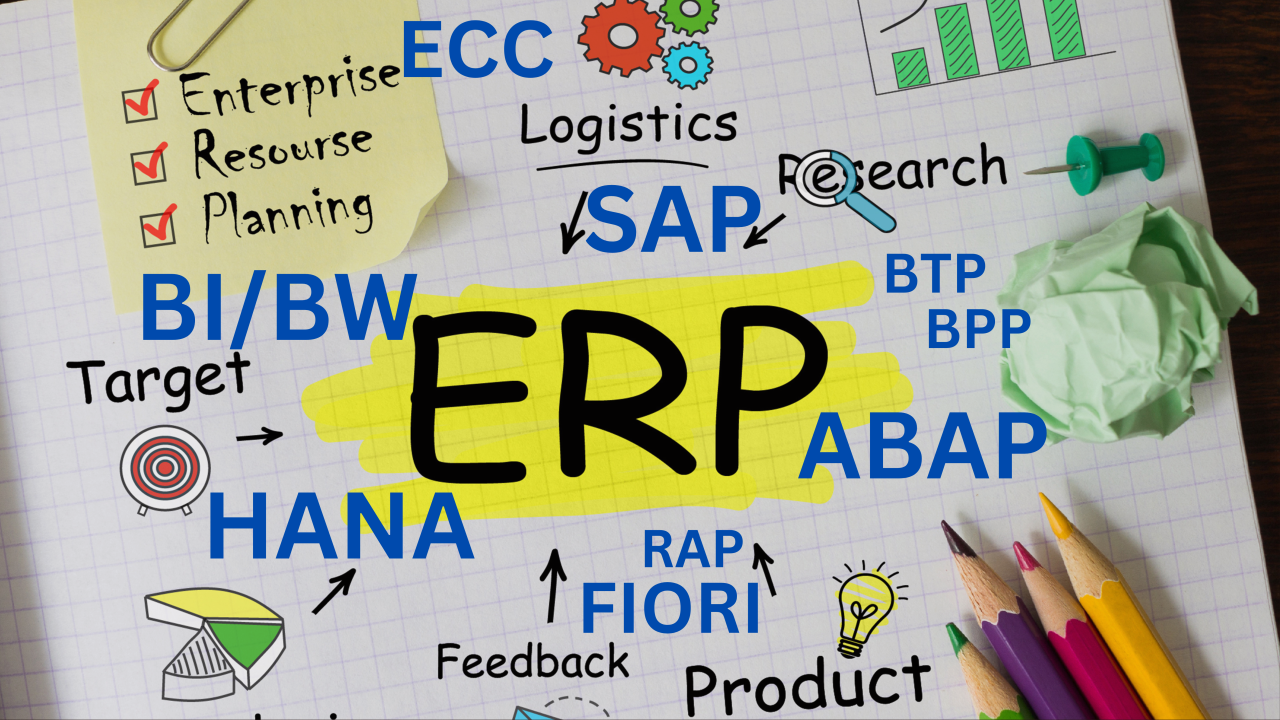Mastering SAP Implementation: A Deep Dive into the SAP Activate Methodology
The SAP Activate Methodology has become the cornerstone for organizations…
View MoreJuly 03, 2025 | Pinakin Soni

The SAP Activate Methodology has become the cornerstone for organizations aiming to implement SAP solutions, such as SAP S/4HANA, with efficiency, agility, and reduced risk. Unlike its predecessor, the Accelerated SAP (ASAP) methodology, which was primarily designed for on-premise implementations, SAP Activate is a flexible, agile framework tailored for cloud, on-premise, and hybrid deployments. This article explores the SAP Activate implementation process, its key phases, and why it’s a game-changer for project managers and organizations navigating complex SAP transformations.
SAP Activate is a comprehensive methodology that combines SAP Best Practices, guided configuration, and an agile project management approach to streamline the implementation of SAP solutions. It is built on three pillars:
SAP Best Practices: Pre-configured, ready-to-run business processes optimized for SAP S/4HANA, enabling organizations to leverage industry-standard solutions with minimal customization.
Guided Configuration: Tools and templates that simplify system setup, ensuring alignment with business needs and reducing configuration errors.
Agile Methodology: An iterative, sprint-based approach that promotes continuous feedback, flexibility, and collaboration between business and IT teams.
Unlike ASAP’s waterfall approach, SAP Activate emphasizes a fit-to-standard philosophy, encouraging organizations to adopt standard SAP processes to minimize customizations and accelerate time-to-value. This makes it ideal for today’s dynamic business environments, where cloud and hybrid deployments are increasingly common.
The SAP Activate Methodology is structured around six core phases: Discover, Prepare, Explore, Realize, Deploy, and Run. Each phase is designed to guide project teams through the implementation lifecycle with clear deliverables and milestones. Let’s break them down:
The Discover phase is about exploration and alignment. Here, organizations assess the capabilities of SAP solutions, typically through trial systems (cloud or on-premise IDES), to understand how they align with business needs. Key activities include:
Evaluating SAP S/4HANA’s business processes and Fiori user experience.
Developing a business case to justify the investment.
Documenting pain points, required modules, integrations, and strategic goals.
Creating a high-level implementation roadmap aligned with organizational objectives.
This phase sets the foundation by ensuring stakeholders understand the solution’s potential and are aligned on the project’s vision.
The Prepare phase marks the official project kickoff. It focuses on establishing governance, defining roles, and setting up the initial system environment. Key tasks include:
Finalizing the project charter, scope, and detailed project plan.
Onboarding project teams from both the customer and implementation partner.
Setting up the initial system (e.g., a pre-activated appliance) for fit-to-standard analysis.
Preparing master data templates and defining quality and risk management plans.
This phase ensures all stakeholders are aligned and the project infrastructure is in place for a smooth transition to the next steps.
The Explore phase is where the fit-to-standard approach shines. Project teams conduct workshops to map business processes to SAP Best Practices, identifying gaps and delta requirements. Key activities include:
Running fit-to-standard workshops using a sandbox or starter system to demonstrate standard SAP processes.
Documenting configuration requirements and gaps in the project backlog.
Performing fit-gap analysis to determine necessary customizations or RICEFW (Reports, Interfaces, Conversions, Enhancements, Forms).
This phase fosters collaboration between business users and SAP consultants, ensuring the solution aligns with business needs while minimizing customizations.
The Realize phase is the heart of the implementation, where the system is configured, tested, and refined through iterative sprints. Key tasks include:
Configuring the SAP system based on requirements from the Explore phase.
Developing and testing RICEFW objects.
Conducting unit tests, integration tests, and User Acceptance Testing (UAT) for end-to-end processes like Order-to-Cash or Procure-to-Pay.
Preparing end-user training materials and conducting training sessions.
Verifying system performance on development and quality assurance (QAS) servers.
The agile approach allows for continuous feedback, ensuring the solution evolves to meet business requirements while maintaining quality.
The Deploy phase prepares the system for production and ensures a seamless go-live. Key activities include:
Executing data migration and system cutover activities.
Conducting dress rehearsals to simulate the go-live process.
Finalizing end-user roles and training.
Performing a go-live readiness check, confirming UAT, RICEFW, and integrated cycle sign-offs.
Transitioning to the production environment and providing hyper-care support post-go-live.
This phase minimizes surprises by thoroughly testing real-life scenarios in the QAS environment before going live.
The Run phase focuses on post-go-live operations and continuous improvement. Key tasks include:
Monitoring system performance and addressing issues through hyper-care support.
Adding new users and enabling them to execute business transactions.
Implementing updates and new functionalities to align with SAP’s quarterly or annual release cycles.
Encouraging continuous learning to keep up with SAP innovations.
This phase ensures the system remains optimized and adaptable to evolving business needs.
SAP Activate’s agile, modular, and scalable approach offers several advantages over traditional methodologies like ASAP:
Faster Time-to-Value: The fit-to-standard approach and preconfigured Best Practices reduce customization and accelerate deployment.
Flexibility: Supports cloud, on-premise, and hybrid deployments, making it versatile for diverse IT landscapes.
Reduced Risk: Iterative sprints and continuous validation minimize surprises during go-live.
Enhanced Collaboration: Involving business users from the start ensures alignment with business goals and fosters ownership.
Continuous Innovation: Tools like SAP Cloud ALM and the SAP Roadmap Viewer help organizations stay current with SAP updates.
To maximize the benefits of SAP Activate, consider these tips:
Start Early with Data Management: Plan data migration and quality checks from the Discover phase to avoid delays. Use mock data loads during sprints to validate data integrity.
Leverage SAP Tools: Utilize accelerators like the Business Driven Configuration Questionnaire and SAP Roadmap Viewer to streamline configuration and planning.
Foster Collaboration: Engage business process owners and end-users throughout the project to ensure the solution meets their needs.
#SAPActivate #SAPImplementation #ProjectManagement #AgileMethodology #SAPBestPractices #S4HANA #BusinessTransformation #EnterpriseSolutions #ITStrategy #DigitalTransformation

Mastering SAP Implementation: A Deep Dive into the SAP Activate Methodology
The SAP Activate Methodology has become the cornerstone for organizations…
View More
How to Design a Classic Report in SAP ABAP: A Step-by-Step Guide!
Are you an SAP ABAP developer looking to master the…
View More
AWS vs. Azure vs. Google Cloud: A Comparison of Top 10 Productive Features for 2025
AWS vs. Azure vs. Google Cloud: A Comparison of Top…
View More